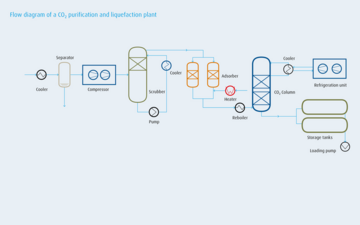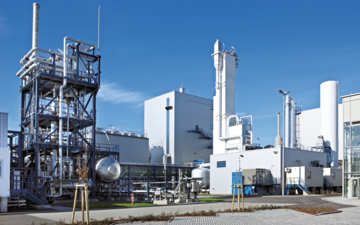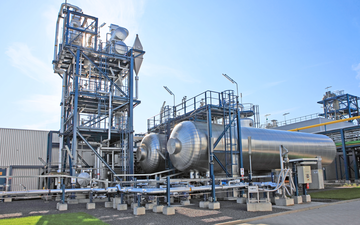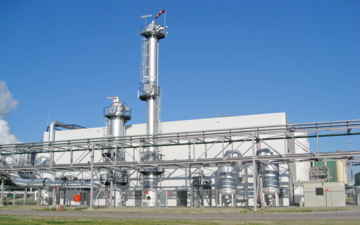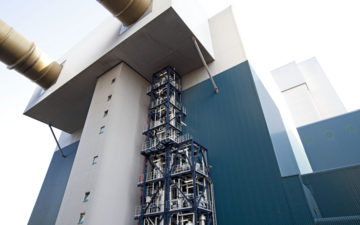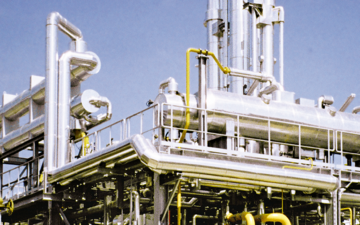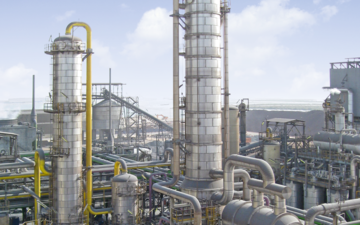CO₂ purification and liquefaction plants
Capturing waste streams of carbon dioxide and putting them to good use.
Balancing rising demand for energy with climate mitigation pressures
As global demand for energy rises, so does the need for solutions to minimise the carbon balance of fossil fuel combustion. One possible way to balance conflicting needs lies in reducing combustion-induced carbon emissions with plants that capture CO2 from flue gases and then purify and liquefy the gas for other applications. Here at Linde, we have developed a wide portfolio of both customised and standardised CO2 plants to meet all volume, purity and time-to-solution needs.
Complementing our customised offering, we deliver a range of modular plants. These are designed to maximise cost efficiencies, and reduce risk and production time through standardisation and pre-testing, while still giving you the flexibility you need to adapt to variations in feed gas sources and product requirements. Design highlights include a compact footprint and ease of maintenance. Being both plant supplier and operator, Linde has the capability to feed the operational experience back into future plant design. Each client can profit from these continuous improvements.
Maximum availability and ease of maintenance
Offering exceptional availability rates close to 100%, all of our plants are engineered for excellence, featuring premium components to ensure maximum operational uptime. Easy accessibility to all components simplifies maintenance. In addition, we deliver spare parts and can also look after maintenance and after-sales support.
Advanced flexibility
We engineer our CO₂ purification and liquefaction plants to give you the flexibility you require. For instance, operational capacity can be easily adjusted to the desired output level. The plant design can be adapted to all variations in feed gas sources and be started up and shut down within a matter of hours.
Remote control
To increase manageability even further, our plants come with an optional dedicated port that can be connected to a communication board for remote control. Plants can even be powered up and shut down in remote mode. In addition, fully automated product analysis, truck loading and weighing equipment are available.
Complementary services
Rounding out our offering of CO2 plants, we also offer a range of financing and aftersales support services as well as remote management through our Remote Operating Centres (ROCs).
Pre-cooling and compression
This unit cools down the water-saturated feed gas and then separates the water. The cooled gas is sent to the CO2 compressor to increase the pressure up to operating conditions. Boiloff gas from the storage tanks can also be recycled to the compressor. Oil filters and various adsorbers can be added downstream as required to remove additional components such as hydrogen sulfide (H2S) or trace impurities.
Scrubbing
The CO2 gas is fed into the scrubber unit to wash and cool down the gas. This is also where water-soluble components such as alcohols are removed.
Drying and adsorption
The remaining water and traces of other chemical components are removed from the gas stream in the interchangeable dryers. Depending on requirements, various adsorbers and filters are installed downstream in order to remove further components such as carbonyl sulfide (COS).
Liquefaction
The dry CO2 gas passes through a reboiler followed by the CO2 distillation column. The gas leaving the column at the top contains the inert components. The liquid CO2 product drawn off the bottom is sent to the storage tank or vaporised for various on-site solutions.
Storage system and loading facilities
The liquefied CO2 is stored in pressurised tanks. For transportation purposes, it is pumped through the respective loading facilities into trucks, railway cars and ships. For gaseous on-site applications, the CO2 is pressurised by means of additional compressors connected to the pipeline network.
References
Linde has the know-how and the experience to plan, design, supply and construct complete plants. Moreover, Linde is able to demonstrate this capability within the following references.
-
CO₂ purification and liquefaction plant with food grade quality in Manchester, UK
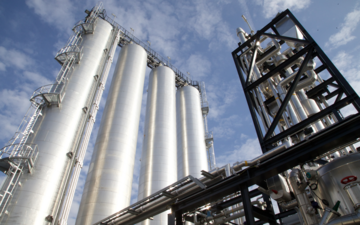
Customer: BOC Capacity: 100 t/d liquid CO2 Purity: 99.99% CO2 (food grade) Scope of work: Turnkey plant Start-up: 2017 
-
CO₂ purification and liquefaction plant with food grade quality in Monterrey, Mexico
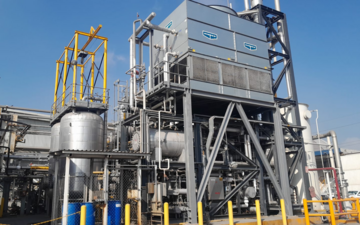
Customer: Linde Gas Mexico Capacity: 200 t/d liquid CO2 Purity: 99.99% CO2 (food grade) Scope of work: Turnkey plant Start-up: 2022 
Downloads
